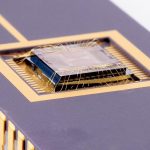GPS Has Role in Probing Universe’s Mysteries
International astronomers linked observations from eight telescopes, including the the Canadian Hydrogen Intensity Mapping Experiment (CHIME), to pinpoint the location of a repeating fast radio burst (FRB), a little-understood and seldom-observed astronomical phenomenon that may hold keys to the origin of the universe. GPS played an important role in coordinating the telescopes and their milliseconds of data.
By Inside GNSS













